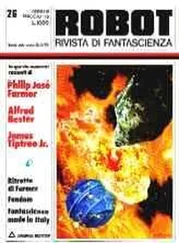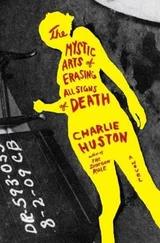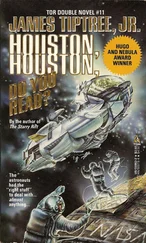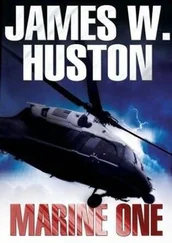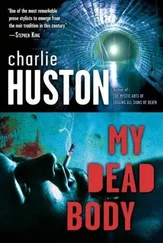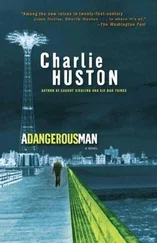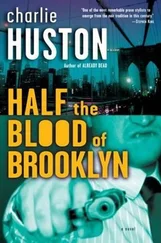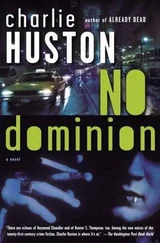Luke increased his throttle until it was at the stops. He pulled back on the stick and climbed to ten thousand feet to save gas and have a better chance of detecting the low-flying Pakistanis with his infrared system.
Luke knew the sensitivity of the F-16 radar-warning indicator much better than Vlad did. He wasn’t about to hand Khan any advance warning by giving him a radar strobe from his MiG. Even a passing hit would alert Khan that MiGs were airborne. Luke didn’t want Khan to have any idea they were coming until they were on top of him.
Luke turned up the screen of his infrared detector to see the green against black clearly. It didn’t transmit anything, it just detected heat sources. He had practiced with it on almost every hop at the Nevada Fighter Weapons School. He found it easy to use and loved the idea of a totally passive intercept, where he would shoot down another airplane without even turning on his radar, without the other pilot even knowing he was nearby. It was a device few American fighters had. The F-16 had no infrared search-and-track system for air-to-air use, nor did the F/A-18 that Luke had spent most of his time flying.
He checked the status of the two Archer and two Alamo missiles he was carrying. It was a decent load, but he would have preferred to carry four Archers. “Spread,” Luke transmitted. Vlad took combat spread, a mile to Luke’s right. They climbed to ten thousand feet, high enough to hear the chatter on the air-control frequency. The ten Indian MiG-29s Prekash had ordered to defend the nuclear plant were now airborne and flying low combat air patrol near the plant. Other airborne early-warning aircraft were searching for Khan and broadcasting everything they thought would help identify them to the fighter patrol. Luke was sure somebody would be monitoring the Indian radio channels and fighter control to alert Khan of any developments. Khan would receive any such intelligence over his own radio without disclosing his own position.
Luke checked his chart again and turned toward Pakistan. Vlad was a mile to his right, slightly above him in combat spread. Luke studied the IR image and saw nothing that resembled an airplane. He didn’t have much range with the IR system, but he refused to turn on his radar and give himself away.
He looked out toward the dark land below. He could barely see the ground. There were a few headlights on the invisible roads. The waning moon provided some illumination, but not enough to navigate by.
Luke figured they’d beaten the F-16s to this point on their flight path by ten minutes. He turned outbound and headed toward the pass where the guard had heard the fighters. If his estimates were right, he had less than five minutes until he would be on top of the F-16s.
Vlad was getting antsy. “Nothing.”
“Ditto,” Luke replied.
Luke suddenly saw a flash on the left side of his infrared screen. Something very hot was fifteen or twenty degrees below the horizon and far to his left. “Hard left!” he transmitted as he threw his stick to the side and rolled his Fulcrum into a ninety-degree angle of bank in the darkness. He headed left and down as his IR system continued to search for and reacquire the target. Luke couldn’t see anything and wondered if he’d deceived himself into thinking he’d seen a return. He searched higher and lower. Still nothing. His speed passed through 550 knots as he passed through five thousand feet toward the ground. He rolled out of his turn and pointed at where he thought the targets should be. He couldn’t find any signs of any airplanes at all.
He began to doubt himself even more when suddenly he had a strobe, a hint of an IR return on his screen, still to the left and down. Then a second, then a third hit. It had to be them. They were low, and less than ten miles away, still far to his left. If he hadn’t caught the initial return, they would already be past him. He would never have seen them.
He pulled into the targets in a descending left turn and accelerated. He tweaked the controls on the IR system to separate out the bogeys. He tried to remember the minimum safe altitude of the area to avoid flying into a hill or antenna tower, but couldn’t remember what it was.
Luke heard a buzz in his helmet—the sound of an F-16 radar on his radar-warning receiver. He had a strobe from his one o’clock position, just to the right of his nose. “I’m getting tickled,” he transmitted ominously to Vlad.
“So am I.”
“I’m going active.” Luke threw on the switch for his radar and turned the powerful MiG-29 radar toward the targets tearing across the Indian countryside. He quickly located them and locked up the lead to concentrate the radar’s total energy on that one airplane. He was doing 620 knots. Luke was stunned. The altitude readout showed “zero” feet, so low that the radar couldn’t tell they weren’t on the ground. Night-vision goggles, Luke concluded. That gave them a big advantage he hadn’t anticipated.
He broke lock on the radar and went into track-while-scan. He saw two other targets immediately, and then a third came up tentatively on the screen. Abruptly the third target started turning toward him and coming up after him. Luke hesitated as he suddenly realized that Khan had done the very thing Luke had told him not to do—he’d brought fighter escort. Two light F-16s, unencumbered with fuel tanks or bombs, peeled off Khan’s formation to come after Luke and Vlad.
They had speed, they had good position, and they had American forward-quarter-firing AIM-9 Sidewinder missiles. Luke knew they had to act immediately or they would be dead. “Two free fighters coming up after us, Vlad. I’m going low.”
“Roger. I’m going up, then. Over,” Vlad responded quickly.
They extinguished their anticollision lights.
Luke pushed the nose of his MiG-29 over, to pass by the climbing F-16s and race toward Khan. The lead F-16 anticipated his move. Luke suddenly had an F-16 radar locked on him from the right side of his MiG. Luke had to turn into him to defend himself or he would never be able to intercept Khan. But if he did, Khan would slip away to his left. Luke had no choice.
He brought the Fulcrum around hard right and looked up through the windscreen with his helmet-mounted sight toward where the F-16 should be. He couldn’t see him in the pitch-black sky. Luke tried to get the Archer missile to search for it, to give him the growl he yearned to hear, but there was no sound at all from his heat-seeking missiles.
He strained against the high G forces as he continued around to the right. He slaved his radar to the right toward the F-16, but still nothing. He still had a hard strobe on his radar-warning indicator. The F-16 had him locked up. Luke dumped some chaff to try to break the radar lock but had no success. He was trapped. The F-16 was coming uphill at him. It had a radar lock and almost certainly a sweet infrared shot. Luke had nowhere to go. Suddenly he remembered to activate the electronic jammers in the hump of his MiG, the jammers designed and installed just to defeat American-built radars. He reached and quickly threw the switches. He waited for the flash of the AIM-9 missile coming off the rail, but so far he had seen nothing. Then the F-16 radar was gone, deceived by the electronics of the MiG. Luke grunted. Good old Russian engineering.
The two fighters raced toward each other at twelve hundred miles an hour, neither able to see the other, both following the vaguely remembered strobe of the F-16 radar, which had broken lock seconds before. Luke suddenly noticed a return on his infrared receiver and slaved the seekerhead of the Archer missile to it. The Archer missile picked up the heat signature of the F-16 as it climbed away from the land. The missile seekerhead growled in eager anticipation. Luke fired immediately, reduced his throttle to idle, and turned back hard to his left to stay on Khan’s trail.
Читать дальше


